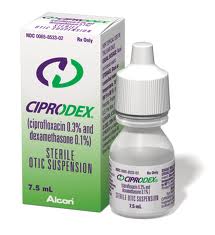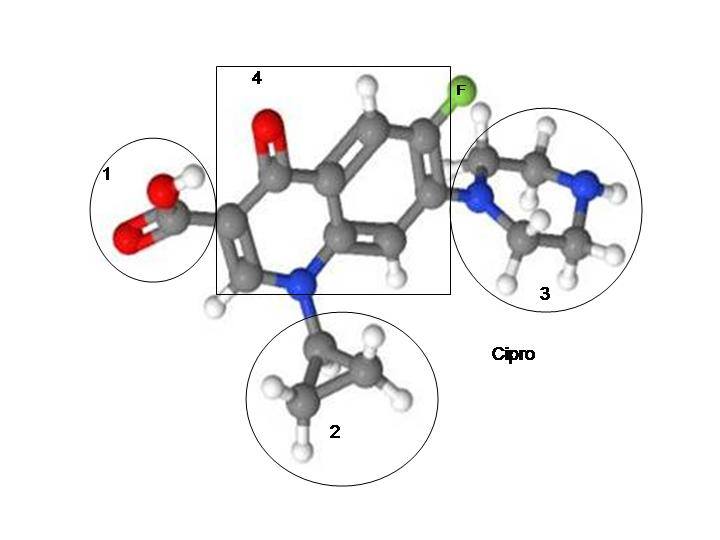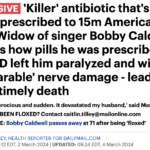A recent study published in Clinical Infectious Diseases, “Quinolone Ear Drops After Tympanostomy Tubes and the Risk of Eardrum Perforation: A Retrospective Cohort Study” found that children who were prescribed quinolone (fluoroquinolone) ear drops were significantly more likely to experience perforated eardrums than those who used an alternative, non-fluoroquinolone, antibiotic ear drop – neomycin.
In the study, researchers tracked Medicaid data for almost 100,000 children who underwent ear tube surgery (tympanostomy). The researchers then compared post-operative eardrum perforation rates after kids were given either quinolone or neomycin antibiotic ear drops.
The researchers found that children who received quinolone ear drops were 60% more likely to suffer eardrum perforations than those who received neomycin ear drops, and the rates of eardrum perforation were even higher in the children who were given quinolones together with steroids.
One of the study’s authors, Almut Winterstein, noted, “Evidence on quinolones’ detrimental effects on soft tissues, animal studies, clinical trials and observational studies overwhelmingly point to the possibility that quinolones could contribute to the development of persistent eardrum perforations.”
Comments from Victims
When a story about this study was posted on The Fluoroquinolone Wall of Pain Facebook page, several people noted that their children had suffered adverse effects of fluoroquinolone ear drops. The comments included:
“My 14 year old was prescribed Cipro drops multiple times when he was younger for ear infections and after tubes were put in twice. Last month he had surgery to repair a hole in his eardrum. Now I know better…10 years ago I didn’t know.”
“Our daughter was prescribed these for years–always had a bottle on hand to start if we suspected an infection (as per her doctor) Now at 17 she’s had two progressively invasive surgeries to repair an ear tube hole that keeps popping open. She also has hearing loss due to surgeries. Next up is a specialist and a more invasive graft to get it to close. Definitely going to follow up on this research and results……”
“My daughter had two sets of tubes with these drops prescribed both times. At 6, the doctors determined she needed a 3rd set but would not give them to her due to severe perforations of her ear. They dismissed the perforations as caused by ear drum ruptures from ear infections. Now they are telling me that she may always have pressure related problems and may never be able to scuba dive. I refused the drops for her after I was floxed in 2015 by taking Cipro.”
It is absolutely heartbreaking to hear of children being hurt by fluoroquinolones. My heart aches for the parents of these children as well. They are victims of these drugs too.
Quinolones/Fluoroquinolones Damage Connective Tissues
I’m really glad that this study was done, and I commend Doctors Alrwisan, Antonelli, and Winterstein for conducting it. I hope that pediatric ENTs will hear about this study and understand that quinolone/fluoroquinolone ear drops are dangerous, and that they can lead to perforated ear drums and other health complications.
I understand that the alternative to quinolone/fluoroquinolone ear drops, neomycin, has adverse effects as well, but it does not damage connective tissues or lead to eardrum perforation at near the rate that quinolone/fluoroquinolone ear drops do. Quinolone/fluoroquinolone ear drops are dangerous, and they’re not only dangerous to ears. As Bill’s Story on www.fqwallofpain.com notes, other connective tissue problems can occur after using quinolone/fluoroquinolone ear drops. Bill states:
“I went to see my doctor and was prescribed ciproxin eardrops for an ear infection.They didn,t seem to help my ear so went back to doctors and told him my shoulders were very sore and I had a strange rash on my back.He suggested I may have tendonitis.”
Another “floxie” friend stated that:
“Ofloxacin Eardrops have ruined my life. It has left me disabled in horrible pain totally bedridden.”
Fluoroquinolones, in any form, are dangerous drugs that adversely affect all bodily systems–from tendons, to nerves, to hormones, to the gut biome, and more.
Fluoroquinolones should never be used unless a person is facing a life-or-death need, AND there are no safer alternatives. For all the children in the study who were given quinolone ear drops after ear tube surgery (tympanostomy), there was an alternative. Though the alternative, neomycin, is imperfect, it is safer than quinolone/fluoroquinolone ear drops.
Delayed Effects
Fluoroquinolone adverse effects are often delayed for weeks, or even months, after administration of the drug has stopped. This makes recognition of fluoroquinolone adverse effects difficult, to say the least. Retrospective cohort studies, such as, “Quinolone Ear Drops After Tympanostomy Tubes and the Risk of Eardrum Perforation: A Retrospective Cohort Study” are a good way to identify delayed adverse effects of fluoroquinolones. The researchers who conducted “Quinolone Ear Drops After Tympanostomy Tubes and the Risk of Eardrum Perforation: A Retrospective Cohort Study” looked at years of medical data (from 1999 to 2006) to determine that the rates of eardrum perforation were higher among those who were prescribed quinolone/fluoroquinolone antibiotic ear drops than those who were prescribed neomycin antibiotic ear drops. The eardrum perforations didn’t happen immediately upon administration of the quinolone/fluoroquinolone ear drops, rather, they were a delayed effect that was only uncovered by looking through medical records.
Fluoroquinolone toxicity resembles many recognized illnesses, including all autoimmune diseases, many neurodegenerative diseases, fibromyalgia, ME/CFS, psychiatric illnesses, digestive problems, autonomic nervous system disorders, diabetes, and more. It would be fascinating, informative, and useful if studies were conducted that looked at medical records of people who had been prescribed antibiotics, then compared future health outcomes to see if those who were prescribed fluoroquinolone antibiotics were more likely to be diagnosed with autoimmune diseases, fibromyalgia, ME/CFS, psychiatric illnesses, digestive problems, autonomic nervous system disorders, diabetes, etc. than those prescribed non-fluoroquinolone antibiotics. I would certainly bet on a strong correlation between fluoroquinolone use and many illnesses, but my bets mean nothing until the studies get done. I am hopeful that more studies examining the long-term effects of fluoroquinolones on multiple areas of health get done. It is only with research, data, and science, that the harm that these drugs do will be adequately recognized.
Study citation:
Adel Alrwisan, Patrick J. Antonelli, Almut G. Winterstein; Quinolone Ear Drops After Tympanostomy Tubes and the Risk of Eardrum Perforation: A Retrospective Cohort Study. Clin Infect Dis 2017; 64 (8): 1052-1058. doi: 10.1093/cid/cix032












… [Trackback]
[…] Information to that Topic: floxiehope.com/study-shows-that-quinolone-ear-drops-increase-rates-of-eardrum-perforation-in-children/ […]
… [Trackback]
[…] Read More on on that Topic: floxiehope.com/study-shows-that-quinolone-ear-drops-increase-rates-of-eardrum-perforation-in-children/ […]
… [Trackback]
[…] Find More Info here to that Topic: floxiehope.com/study-shows-that-quinolone-ear-drops-increase-rates-of-eardrum-perforation-in-children/ […]
… [Trackback]
[…] Find More Info here to that Topic: floxiehope.com/study-shows-that-quinolone-ear-drops-increase-rates-of-eardrum-perforation-in-children/ […]
… [Trackback]
[…] Find More Info here on that Topic: floxiehope.com/study-shows-that-quinolone-ear-drops-increase-rates-of-eardrum-perforation-in-children/ […]
… [Trackback]
[…] Read More Information here on that Topic: floxiehope.com/study-shows-that-quinolone-ear-drops-increase-rates-of-eardrum-perforation-in-children/ […]
… [Trackback]
[…] Read More on to that Topic: floxiehope.com/study-shows-that-quinolone-ear-drops-increase-rates-of-eardrum-perforation-in-children/ […]
… [Trackback]
[…] Read More Info here on that Topic: floxiehope.com/study-shows-that-quinolone-ear-drops-increase-rates-of-eardrum-perforation-in-children/ […]
… [Trackback]
[…] Find More on that Topic: floxiehope.com/study-shows-that-quinolone-ear-drops-increase-rates-of-eardrum-perforation-in-children/ […]
… [Trackback]
[…] Read More on that Topic: floxiehope.com/study-shows-that-quinolone-ear-drops-increase-rates-of-eardrum-perforation-in-children/ […]
… [Trackback]
[…] Info to that Topic: floxiehope.com/study-shows-that-quinolone-ear-drops-increase-rates-of-eardrum-perforation-in-children/ […]
… [Trackback]
[…] There you will find 68625 additional Info on that Topic: floxiehope.com/study-shows-that-quinolone-ear-drops-increase-rates-of-eardrum-perforation-in-children/ […]
… [Trackback]
[…] Information on that Topic: floxiehope.com/study-shows-that-quinolone-ear-drops-increase-rates-of-eardrum-perforation-in-children/ […]